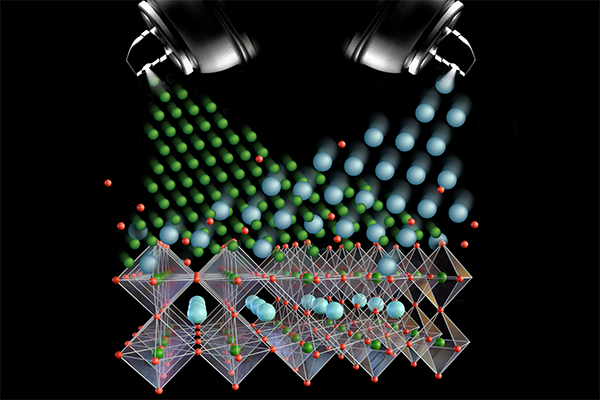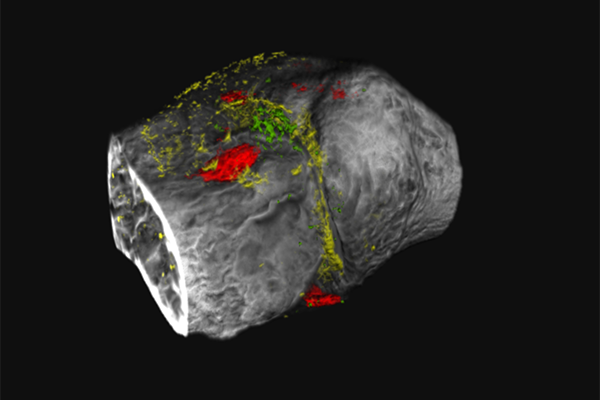Duanchen Zhang has been selected to represent Penn State’s College of Earth and Mineral Sciences as the student marshal for the college’s fall 2024 commencement on Sunday, Dec. 22, in the Bryce Jordan Center on the University Park campus.
The microelectronics industry is nearing a tipping point. The silicon chips at the heart of everyday electronic devices are running into performance limits, raising the need for new materials and technologies to continue making faster, more efficient devices.
What’s the best way to precisely manipulate a material’s properties to the desired state? It may be straining the material’s atomic arrangement, according to a team led by researchers at Penn State. The team discovered that “atomic spray painting” of potassium niobate, a material used in advanced electronics, could tune the resulting thin films with exquisite control. The finding, published in Advanced Materials, could drive environmentally friendly advancements in consumer electronics, medical devices and quantum computing, the researchers said.
Six Penn State materials researchers have received the 2024 Rustum and Della Roy Innovation in Materials Research Award, recognizing a wide range of research with societal impact. The award is presented by the Materials Research Institute (MRI) and recognizes recent interdisciplinary materials research at Penn State that yields innovative and unexpected results.
Penn State student Matias Moreno sees a path to bettering his own future in higher education. He sees the engineering skills he’s learning along the way as a path to a more sustainable future for all of us.
Penn State professor John Mauro, an internationally recognized materials expert and co-inventor of LionGlass, has been elected an academician by the World Academy of Ceramics (WAC).
A new type of eco-friendly glass developed by researchers at Penn State offers higher crack resistance, potentially allowing for thinner, lighter and more sustainable products.
Penn State has named Morgan Advanced Materials, a global manufacturer of ceramics and carbon materials, as its 2024 Corporate Partner of the Year. The annual award celebrates corporate partners that have demonstrated exceptional commitment in the promotion and support of Penn State, have excellent track records of philanthropy and research, and actively engage Penn State students and alumni in the workplace and the classroom.
Medical imaging is no longer in Kansas, Toto, as a team led by Penn State researchers brings traditional black and white diagnostic images of X-rays and traditional CT scans into technicolor. The researchers developed novel contrast agents that target two proteins implicated in osteoarthritis, a degenerative joint disease commonly characterized as wear-and-tear arthritis. By marking the proteins with the contrast agents comprising newly designed metal nanoprobes, the researchers can use advanced imaging called “K-edge” imaging or photon-counting computed tomography (CT) to simultaneously track separate biological processes in color that, together, reveal more about the disease’s progression than a traditional scan.
An old physical phenomenon, known as the Hall effect, has revealed some new tricks, according to a team co-led by researchers at Penn State and the Massachusetts Institute of Technology (MIT). They reported their findings, which they said have potential implications for understanding fundamental physics of quantum materials and developing applied technologies such as quantum communication and harvesting energy via radio frequencies, this week (Oct. 21) in Nature Materials.











